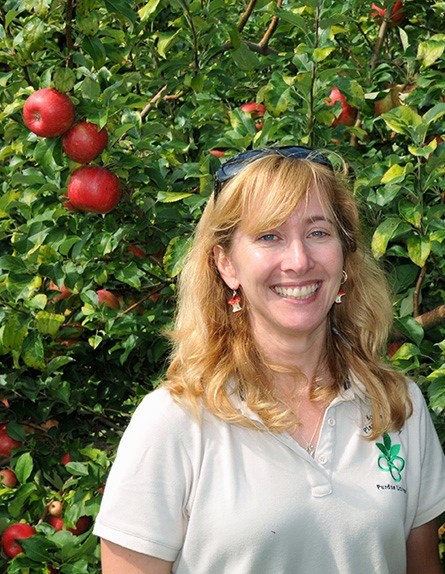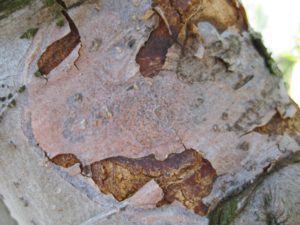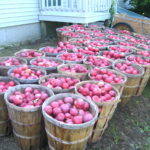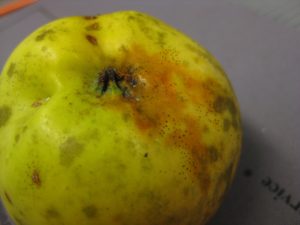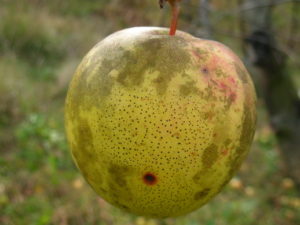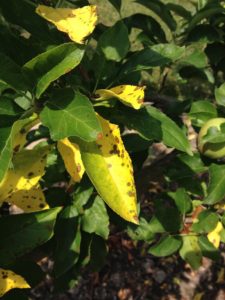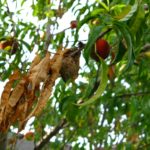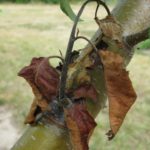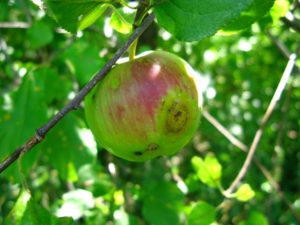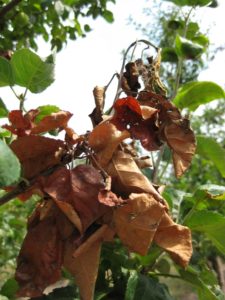Spring is in the air, and soon, ascospores, basidiospores, and conidia will be as well–Now is the time for disease management! Not sure what to spray or when to spray it? There is always the Midwest Fruit Pest Management Guide, available at: https://ag.purdue.edu/hla/Hort/Documents/ID-465.pdf For those of you who would like a different approach and layout,[Read More…]
“During the past few years considerable complaint has been made in this state of the loss of apples through rotting.” George P. Clinton, 1902. It’s been quite a season for rot. High temperatures, coupled with regular rains created a perfect storm of summer rots. If you were one of the orchards with problems, you need[Read More…]
Hopefully, everyone somehow managed to obtain effective fungicide coverage during the wet summer of 2016, and the torrential rains of the last few days. Unfortunately, many of the diseases you thought you successfully battled all summer long might still show up now at harvest, and even in a few weeks post-harvest. It is important to[Read More…]
The symptoms of flyspeck and sooty blotch have begun to make their appearance. I know this because 1). I’m starting to see spots, and 2). We have accumulated MORE THAN enough hours of post- petal fall leaf wetness needed for infection to occur. First, what is enough hours of post- petal fall leaf wetness needed[Read More…]
At midseason, scout fruit (20-30 apples or pear) in the interior canopy of sample trees. Signs of this disease are more obvious on light colored fruit, like Golden Delicious, Pristine, or Yellow Transparent. The disease is worse in poorly pruned trees in the wetter, foggy, slow-drying areas of the orchard. This year, in some parts[Read More…]
Warm, wet, summer weather, coupled with any lapses in orchard sanitation, can result in summer disease outbreaks. At Meigs, we are seeing the foliar stage of Botryosphaeria, aka frog eye leaf spot (Fig. 1). On the plus side, we won’t be surprised when we see black rot on the apples at harvest (Fig. 2). Fortunately,[Read More…]
We are already receiving reports of brown rot, caused by several different types of the fungus Monilinia., Many of these are causing shoot blight, but we are receiving samples of brown rot on cherry fruit. Brown rot is a common and destructive disease of stone fruit, a closely related group of trees that include peach,[Read More…]
Fire blight seems to have established itself in many orchards throughout the state, meaning it can still be a huge threat in the event of trauma, like hail, due to secondary spread. Secondary spread develops when stormy weather, especially hailstorms, occurs after the primary (blossom) infections. The amount of fire blight that develops after severe[Read More…]
Although the season for primary scab infection is winding down, this cool, wet weather is making for an excellent infection period for juniper rusts (Gymnosporangium spp). John Obermeyer and I created this time-lapse video to help explain the complicated lifecycle of this fascinating pathogen: http://tinyurl.com/j3s3t92 The juniper rusts standout due to the conspicuous nature of[Read More…]
Fire blight, caused by the bacterium Erwinia amylovora, is a devastating disease of apples and pears. Epidemics of the disease develop quickly, particularly in a climate of warm, wet weather, with hail events—like last night’s 0.75” to 1.5” hail! The type of management program developed by each orchard will vary considerably based upon a variety[Read More…]
